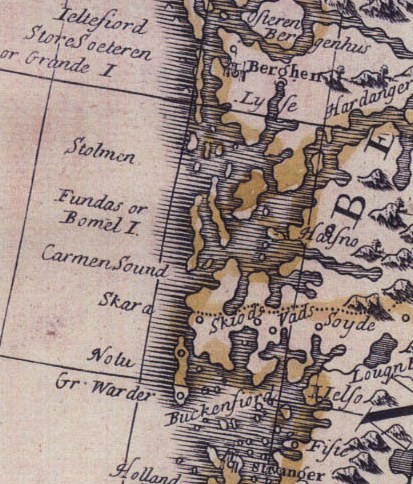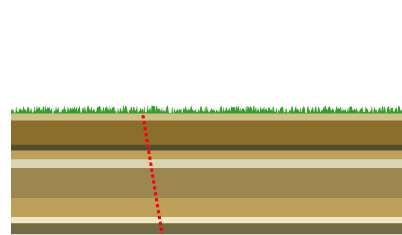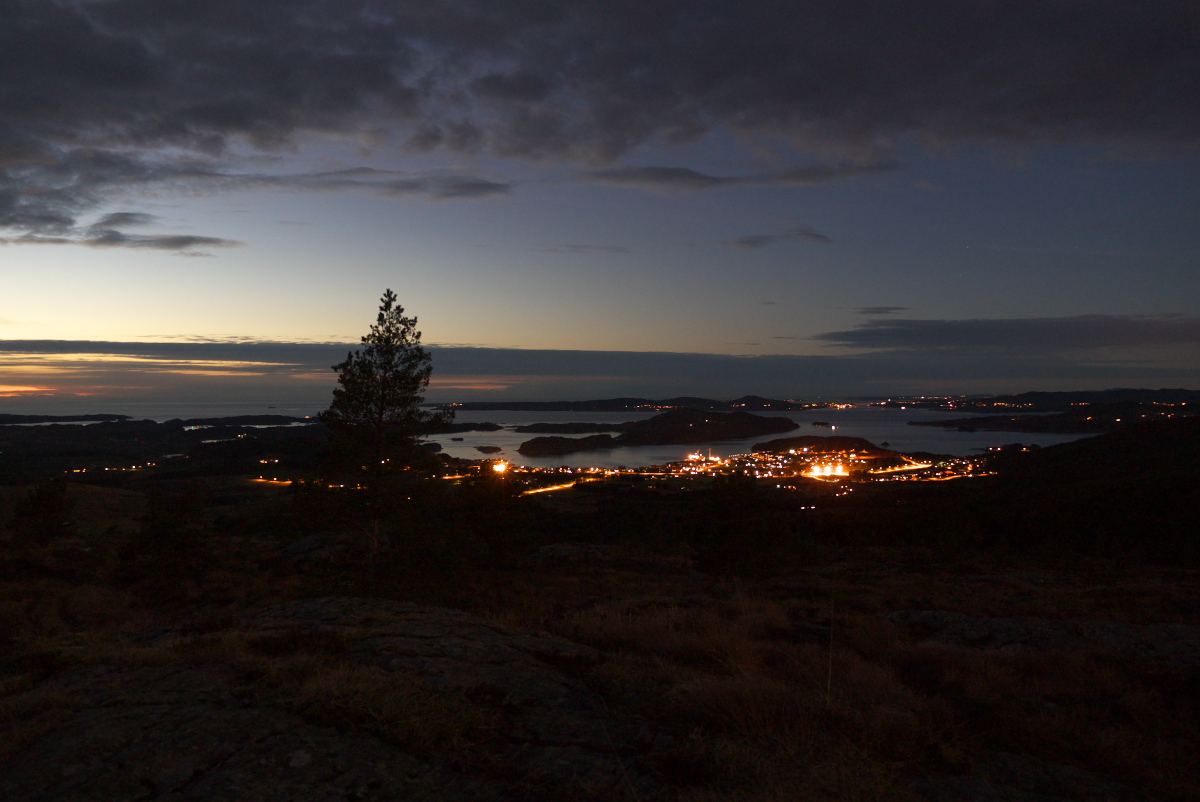|
Bømlo Municipality
Bømlo () is a municipality in the southwestern part of Vestland county, Norway. It is located in the traditional district of Sunnhordland. The administrative centre of the municipality is the village of Svortland. Other villages in Bømlo include Mosterhamn, Rubbestadneset, Lykling, and Langevåg. Most of the municipal residents live on the island of Bømlo, which makes up the majority of the land in the municipality. Bømlo was actively involved in the Shetland bus operation during the Second World War. A 23-year-old male from Bømlo, Nils Nesse, was the first of the Shetland Bus men to be killed. The municipality is the 289th largest by area out of the 356 municipalities in Norway. Bømlo is the 97th most populous municipality in Norway with a population of 12,132. The municipality's population density is and its population has increased by 4.2% over the previous 10-year period. General information The municipality of Bømlo was established on 1 July 1916 when t ... [...More Info...] [...Related Items...] OR: [Wikipedia] [Google] [Baidu] |
Svortland
Svortland or Bremnes is the administrative centre of Bømlo municipality in Vestland county, Norway. The village is located in the north-central part of the island of Bømlo (island), Bømlo, about west of the village of Rubbestadneset. The village surrounds the lake ''Storavatnet''. The Norwegian County Road 542 runs through the village. The village has a population (2019) of 2,932 and a population density of . In addition to municipal services, Svortland is also the location of Bremnes Church, an elementary school, a medical centre, a community centre, and many stores and businesses. The village was historically named ''Bremnes'' after the local church. There was also a local farm in Bremnes called ''Sortland'', which was also used to refer to the area. In the 1990s, the municipal council officially named the urban area ''Svortland''. References Villages in Vestland Bømlo {{Vestland-geo-stub ... [...More Info...] [...Related Items...] OR: [Wikipedia] [Google] [Baidu] |
Mosterhamn - Utsikt Fra Amfiet
Mosterhamn or simply Moster is a village in Bømlo municipality in Vestland county, Norway. The village is located on the small island of Moster in the southeastern part of the municipality of Bømlo. The village lies along the Bømlafjorden. The village has a population (2019) of 1,375 and a population density of . The village is notable since the Old Moster Church is here and that is the site of the ''Mostratinget'', a thing in the year 998 when Olav Tryggvason is said to have brought Christianity to Norway and made it the national Church of Norway. Prior to the opening of the Triangle Link bridge-tunnel network in 2001, Mosterhamn was one port of the Mosterhamn–Valevåg Ferry which crossed the Bømlafjorden Bømlafjorden () is a fjord in Vestland county, Norway. The fjord is the outer-most part of the Hardangerfjord, running between the island of Bømlo (in Bømlo Municipality) and the mainland ( Sveio Municipality). The Bømlafjord Tunnel crosse .... References ... [...More Info...] [...Related Items...] OR: [Wikipedia] [Google] [Baidu] |
Coat Of Arms
A coat of arms is a heraldry, heraldic communication design, visual design on an escutcheon (heraldry), escutcheon (i.e., shield), surcoat, or tabard (the last two being outer garments), originating in Europe. The coat of arms on an escutcheon forms the central element of the full achievement (heraldry), heraldic achievement, which in its whole consists of a shield, supporters, a crest (heraldry), crest, and a motto. A coat of arms is traditionally unique to the armiger (e.g. an individual person, family, state, organization, school or corporation). The term "coat of arms" itself, describing in modern times just the heraldic design, originates from the description of the entire medieval chainmail "surcoat" garment used in combat or preparation for the latter. Roll of arms, Rolls of arms are collections of many coats of arms, and since the early Modern Age centuries, they have been a source of information for public showing and tracing the membership of a nobility, noble family, a ... [...More Info...] [...Related Items...] OR: [Wikipedia] [Google] [Baidu] |
Norsk Lovtidend
''Norsk Lovtidend'' (Norwegian Law Gazette) is a Norwegian periodical published by the Ministry of Justice and the Police. The magazine was first published in 1877. It is regulated by a law from 1969 (), which replaced an earlier law from 1876. From 2001 official publication of new laws or revisions are made on Lovdatas website, while a printed version continued to be published until 2016. References External links * 1877 establishments in Norway 2016 disestablishments in Norway Defunct magazines published in Norway Legal magazines Magazines established in 1877 Magazines disestablished in 2016 Magazines published in Oslo Norwegian-language magazines Online magazines with defunct print editions {{Law-mag-stub ... [...More Info...] [...Related Items...] OR: [Wikipedia] [Google] [Baidu] |
Royal Decree
A decree is a legal proclamation, usually issued by a head of state, judge, royal figure, or other relevant authorities, according to certain procedures. These procedures are usually defined by the constitution, Legislative laws, or customary laws of a government. Belgium In Belgium, a decree is a law of a community or regional parliament, e.g. the Flemish Parliament. Catholic Church A decree (Latin: ''decretum'') in the usage of the canon law of the Catholic Church has various meanings. Any papal bull, brief, or motu proprio is a decree inasmuch as these documents are legislative acts of the pope. In this sense, the term is quite ancient. The Roman Congregations were formerly empowered to issue decrees in matters which come under their particular jurisdiction but were forbidden from continuing to do so under Pope Benedict XV in 1917. Each ecclesiastical province and also each diocese may issue decrees in their periodical synods within their sphere of authority. While i ... [...More Info...] [...Related Items...] OR: [Wikipedia] [Google] [Baidu] |
Dwarf (folklore)
A dwarf () is a type of supernatural being in Germanic folklore. Accounts of dwarfs vary significantly throughout history. They are commonly, but not exclusively, presented as living in mountains or stones and being skilled craftsmen. In early literary sources, only males are explicitly referred to as dwarfs. However, they are described as having sisters and daughters, while male and female dwarfs feature in later saga literature and folklore. Dwarfs are sometimes described as short; however, scholars have noted that this is neither explicit nor relevant to their roles in the earliest sources. Dwarfs continue to feature in modern popular culture, such as in the works of J. R. R. Tolkien and Terry Pratchett, where they are often, but not exclusively, presented as distinct from elves. Etymology and meaning Etymology The modern English noun ''dwarf'' descends from . It has a variety of Cognate, cognates in other Germanic languages, including Old Norse ''dvergr'', Old Frisian ''dw ... [...More Info...] [...Related Items...] OR: [Wikipedia] [Google] [Baidu] |
Mountain Formation
Mountain formation occurs due to a variety of geological processes associated with large-scale movements of the Earth's crust ( tectonic plates). Folding, faulting, volcanic activity, igneous intrusion and metamorphism can all be parts of the orogenic process of mountain building. The formation of mountains is not necessarily related to the geological structures found on it. From the late 18th century until its replacement by plate tectonics in the 1960s, geosyncline theory was used to explain much mountain-building. The understanding of specific landscape features in terms of the underlying tectonic processes is called '' tectonic geomorphology'', and the study of geologically young or ongoing processes is called '' neotectonics''. Types of mountains There are five main types of mountains: volcanic, fold, plateau, fault-block, and dome. A more detailed classification useful on a local scale predates plate tectonics and adds to these categories. Volcanic mountains Mo ... [...More Info...] [...Related Items...] OR: [Wikipedia] [Google] [Baidu] |
Statistics Norway
Statistics Norway (, abbreviated to ''SSB'') is the Norwegian statistics bureau. It was established in 1876. Relying on a staff of about 1,000, Statistics Norway publish about 1,000 new statistical releases every year on its web site. All releases are published both in Norwegian and English. In addition a number of edited publications are published, and all are available on the web site for free. As the central Norwegian office for official government statistics, Statistics Norway provides the public and government with extensive research and analysis activities. It is administratively placed under the Ministry of Finance but operates independently from all government agencies. Statistics Norway has a board appointed by the government. It relies extensively on data from registers, but are also collecting data from surveys and questionnaires, including from cities and municipalities. History Statistics Norway was originally established in 1876. The Statistics Act of 1989 provi ... [...More Info...] [...Related Items...] OR: [Wikipedia] [Google] [Baidu] |
Fitjar Municipality
Fitjar () is a List of municipalities of Norway, municipality in Vestland Counties of Norway, county, Norway. The municipality is located in the Traditional districts of Norway, traditional district of Sunnhordland. Fitjar municipality includes the northern part of the island of Stord (island), Stord and the hundreds of surrounding islands, mostly to the northwest of the main island. The administrative centre of the municipality is the village of Fitjar (village), Fitjar. The municipality is the 317th largest by area out of the 356 municipalities in Norway. Fitjar is the 224th most populous municipality in Norway with a population of 3,181. The municipality's population density is and its population has increased by 6.7% over the previous 10-year period. General information The prestegjeld, parish of ''Fitje'' was established as a municipality on 1 January 1863 when it was separated from the large Stord Municipality. Initially, the population of Fitje was 2,313. On 1 Januar ... [...More Info...] [...Related Items...] OR: [Wikipedia] [Google] [Baidu] |
Stord Municipality
Stord is a municipalities of Norway, municipality in Vestland counties of Norway, county, Norway. It is located in the Traditional districts of Norway, traditional district of Sunnhordland. Stord is sometimes called "Norway in miniature" since it has such a variety of landscapes: coastline, fjords, forests, agricultural land, and mountain areas. The administrative centre of the municipality is the town of Leirvik, which is also the largest town in the municipality and the whole region of Sunnhordland. Leirvik was declared a town in 1997. Other population centres in the municipality include the large village of Sagvåg and the smaller villages of Litlabø and Grov, Hordaland, Grov. The municipality is the 316th largest by area out of the 356 municipalities in Norway. Stord is the 69th most populous municipality in Norway with a population of 19,098. The municipality's population density is and its population has increased by 5.2% over the previous 10-year period. General inform ... [...More Info...] [...Related Items...] OR: [Wikipedia] [Google] [Baidu] |
Stord (island)
Stord is an island in Vestland county, Norway. Located in the Traditional districts of Norway, traditional district of Sunnhordland, the island is part of the municipalities of Stord (southern part) and Fitjar (northern part). The largest settlements on the island are the List of towns and cities in Norway, town of Leirvik (granted town status in 1997) and the villages of Sagvåg and Fitjar (village), Fitjar. Geography Stord has an area of and the highest point is the tall mountain Mehammarsåto. The island lies on the northern side of the mouth of the great Hardangerfjorden. The Selbjørnsfjorden lies on the north end of the island. On the east side of the island, the Langenuen strait separates Stord from the neighboring island of Tysnesøya. On the west side of the island, the Stokksundet (Hordaland), Stokksundet strait separates Stord from the neighboring island of Bømlo (island), Bømlo. There are over 350 small islands and skerries lying off the northeastern coast. ... [...More Info...] [...Related Items...] OR: [Wikipedia] [Google] [Baidu] |
Schei Committee
The Schei Committee () was a committee named by the Government of Norway to look into the organization of municipalities in Norway post-World War II World War II or the Second World War (1 September 1939 – 2 September 1945) was a World war, global conflict between two coalitions: the Allies of World War II, Allies and the Axis powers. World War II by country, Nearly all of the wo .... It convened in 1946, and its formal name was (The 1946 Committee on Municipal Division). Its more commonly used name derives from the committee leader, Nikolai Schei, who was County Governor of Sogn og Fjordane at the time. The committee concluded its work in 1962. By that time, it had published an eighteen-volume work called ''Kommuneinndelingskomitéens endelige tilråding om kommunedelingen''. The findings of the committee were highly influential; it spurred a series of mergers of municipalities, especially during the 1960s, reducing the number of municipalities in Norway from ... [...More Info...] [...Related Items...] OR: [Wikipedia] [Google] [Baidu] |






